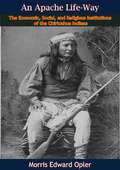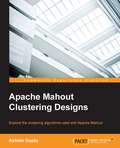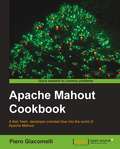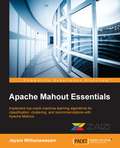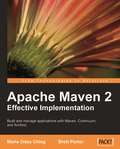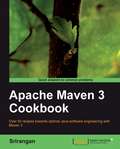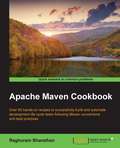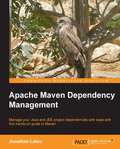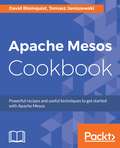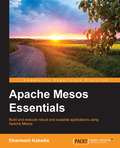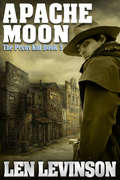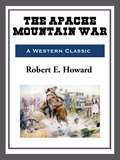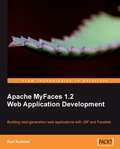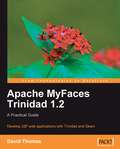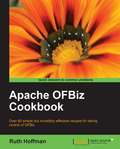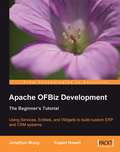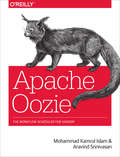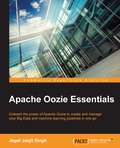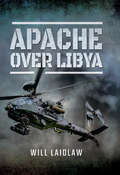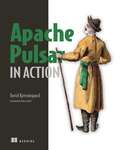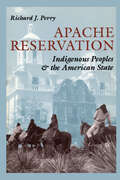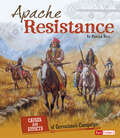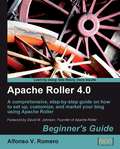- Table View
- List View
An Apache Life-Way: The Economic, Social, and Religious Institutions of the Chiricahua Indians
by Morris Edward OplerA majority of ethnographer Morris Edward Opler’s research was done on Native American groups of the American Southwest. He studied specifically the Chiricahua Indians, who were the subjects of one of his most famous books, An Apache Life-Way: The Economic, Social, and Religious Institutions of the Chiricahua Indians. Opler studied many Native American groups, but the Apache were a main focus of his.An Apache Life-Way traces the life of an Apache year by year. Rather than a history, the book explains the day-to-day Apache experience, detailing the chronological order of one’s life. The lifestyle described in the book is from a time before the Americans started the long era of hostile interactions with the Apache.The people designated as “Apache” in this book are those who spoke the Apache language in the area that is now New Mexico, Arizona, Sonora, and Chihuahua. There were many smaller sub-groups that populated these areas, three of them different groups of the Chiricahua Apache.An Apache Life-Way is divided into several main parts: Childhood; Maturation; Social Relations of Adults; Folk Beliefs, Medical Practice, and Shamanism; Maintenance of the Household; Marital and Sexual Life; The Round of Life; Political Organization and Status; and Death, Mourning, and the Underworld. Each section is divided into more specific subcategories that explore each phase of life and the rituals associated with it.Originally published in 1941, An Apache Life-Way remains one of the most important and innovative studies of south-western Native Americans.“First-class...in the best ethnographic tradition. It fills a great gap in our anthropological knowledge and...deserves to be one of the most used of American tribal records.”—Ruth Benedict, author of Patterns of Culture
Apache Mahout Clustering Designs
by Ashish GuptaExplore clustering algorithms used with Apache Mahout About This Book * Use Mahout for clustering datasets and gain useful insights * Explore the different clustering algorithms used in day-to-day work * A practical guide to create and evaluate your own clustering models using real world data sets Who This Book Is For This book is for developers who want to try out clustering on large datasets using Mahout. It will also be useful for those users who don't have background in Mahout, but have knowledge of basic programming and are familiar with basics of machine learning and clustering. It will be helpful if you know about clustering techniques with some other tool. What You Will Learn * Explore clustering algorithms and cluster evaluation techniques * Learn different types of clustering and distance measuring techniques * Perform clustering on your data using K-Means clustering * Discover how canopy clustering is used as pre-process step for K-Means * Use the Fuzzy K-Means algorithm in Apache Mahout * Implement Streaming K-Means clustering in Mahout * Learn Spectral K-Means clustering implementation of Mahout In Detail As more and more organizations are discovering the use of big data analytics, interest in platforms that provide storage, computation, and analytic capabilities has increased. Apache Mahout caters to this need and paves the way for the implementation of complex algorithms in the field of machine learning to better analyse your data and get useful insights into it. Starting with the introduction of clustering algorithms, this book provides an insight into Apache Mahout and different algorithms it uses for clustering data. It provides a general introduction of the algorithms, such as K-Means, Fuzzy K-Means, StreamingKMeans, and how to use Mahout to cluster your data using a particular algorithm. You will study the different types of clustering and learn how to use Apache Mahout with real world data sets to implement and evaluate your clusters. This book will discuss about cluster improvement and visualization using Mahout APIs and also explore model-based clustering and topic modelling using Dirichlet process. Finally, you will learn how to build and deploy a model for production use. Style and approach This book is a hand's-on guide with examples using real-world datasets. Each chapter begins by explaining the algorithm in detail and follows up with showing how to use mahout for that algorithm using example data-sets.
Apache Mahout Cookbook
by Piero GiacomelliApache Mahout Cookbook uses over 35 recipes packed with illustrations and real-world examples to help beginners as well as advanced programmers get acquainted with the features of Mahout."Apache Mahout Cookbook" is great for developers who want to have a fresh and fast introduction to Mahout coding. No previous knowledge of Mahout is required, and even skilled developers or system administrators will benefit from the various recipes presented
Apache Mahout Essentials
by Jayani WithanawasamIf you are a Java developer or data scientist, haven't worked with Apache Mahout before, and want to get up to speed on implementing machine learning on big data, then this is the perfect guide for you.
Apache Maven 2 Effective Implementation
by Maria Odea Ching Brett PorterAll material in the book will be worked through by example, building up a sample application. It is intended to be read through in sequence, though once complete, should serve as a suitable reference for certain cases that can be referred to directly. This book is for Java developers who want to get started with Apache Maven. If you are tasked with build automation in your company, this book will help you to quickly and easily get started with Maven in order to improve the efficiency of your builds.
Apache Maven 3 Cookbook
by SriranganThis well-detailed Cookbook takes you step by step, doing one task at a time with the latest version of Apache Maven 3. You will find this Cookbook an answer to almost all your needs for building high-quality Java applications with well-explained code and many illustrations to quicken up your learning. If you're a Java developer, it will arm you with all the critical information you need to get to grips with Maven 3, the latest version of the powerful build tool by Apache. This book is for Java developers, teams, and managers who want to implement Apache Maven in their development process, leveraging the software engineering best practices and agile team collaboration techniques it brings along. The book is also specifically for the developer who wishes to get started in Apache Maven and use it with a range of emergent and enterprise technologies including Enterprise Java, Frameworks, Google App Engine, Android, and Scala.
Apache Maven Cookbook
by Raghuram BharathanIf you are a Java developer or a manager who has experience with Apache Maven and want to extend your knowledge, then this is the ideal book for you. Apache Maven Cookbook is for those who want to learn how Apache Maven can be used for build automation. It is also meant for those familiar with Apache Maven, but want to understand the finer nuances of Maven and solve specific problems.
Apache Maven Dependency Management
by Jonathan LalouAn easy-to-follow, tutorial-based guide with chapters progressing from basic to advanced dependency management.If you are working with Java or Java EE projects and you want to take advantage of Maven dependency management, then this book is ideal for you. This book is also particularly useful if you are a developer or an architect. You should be well versed with Maven and its basic functionalities if you wish to get the most out of this book.
Apache Mesos Cookbook
by David Blomquist Tomasz JaniszewskiOver 50 recipes on the core features of Apache Mesos and running big data frameworks in Mesos About This Book • Learn to install and configure Mesos to suit the needs of your organization • Follow step-by-step instructions to deploy application frameworks on top of Mesos, saving you many hours of research and trial and error • Use this practical guide packed with powerful recipes to implement Mesos and easily integrate it with other application frameworks Who This Book Is For This book is for system administrators, engineers, and big data programmers. Basic experience with big data technologies such as Hadoop or Spark would be useful but is not essential. A working knowledge of Apache Mesos is expected. What You Will Learn • Set up Mesos on different operating systems • Use the Marathon and Chronos frameworks to manage multiple applications • Work with Mesos and Docker • Integrate Mesos with Spark and other big data frameworks • Use networking features in Mesos for effective communication between containers • Configure Mesos for high availability using Zookeeper • Secure your Mesos clusters with SASL and Authorization ACLs • Solve everyday problems and discover the best practices In Detail Apache Mesos is open source cluster sharing and management software. Deploying and managing scalable applications in large-scale clustered environments can be difficult, but Apache Mesos makes it easier with efficient resource isolation and sharing across application frameworks. The goal of this book is to guide you through the practical implementation of the Mesos core along with a number of Mesos supported frameworks. You will begin by installing Mesos and then learn how to configure clusters and maintain them. You will also see how to deploy a cluster in a production environment with high availability using Zookeeper. Next, you will get to grips with using Mesos, Marathon, and Docker to build and deploy a PaaS. You will see how to schedule jobs with Chronos. We'll demonstrate how to integrate Mesos with big data frameworks such as Spark, Hadoop, and Storm. Practical solutions backed with clear examples will also show you how to deploy elastic big data jobs. You will find out how to deploy a scalable continuous integration and delivery system on Mesos with Jenkins. Finally, you will configure and deploy a highly scalable distributed search engine with ElasticSearch. Throughout the course of this book, you will get to know tips and tricks along with best practices to follow when working with Mesos. Style and approach This step-by-step guide is packed with powerful recipes on using Apache Mesos and shows its integration with containers and big data frameworks.
Apache Mesos Essentials
by Dharmesh KakadiaThis book is intended for developers and operators who want to build and run scalable and fault-tolerant applications leveraging Apache Mesos. A basic knowledge of programming with some fundamentals of Linux is a prerequisite.
Apache Moon
by Len LevinsonEveryone in town says Braddock is innocent. Two men are dead at the Bar T Ranch: a clear case of self-defense. But an angry Army officer has personal reasons for pressing charges and Braddock is on the run, headed for Mexico with marriage on his mind and high-spirited Phyllis at his side. Between Mexico and freedom lays treacherous Apache land. It could spell cruel death. For Braddock, it becomes a haven - - a place to discover a priceless piece of his heritage. But a relentless sense of duty and a fat bounty to bring Phyllis home spur on Marshall Dan Stowe to smoke the Pecos Kid out. And before he knows it, Braddock is alone, riding for the border and a shootout that will brand him an outlaw forever or leave him stone-cold dead.
Apache Mountain Justice
by Ray HoganWhen Frank Bratton finished doing time for a bank robbery, he decided to make dealing a deck of cards rate more than a Colt .45. But a cheating gambler made him reach for his gun--and now crack U.S. Marshal Harry Locke wanted him for murder. At the same time, Bratton's old gang, headed by ruthless Monty Killeen, called him a traitor and lusted for blood vengeance. Only Bratton's beautiful ex-girlfriend Jenny McCall believed in his innocence. But Jenny was sure to be a handicap in a mountain showdown where one wrong move would leave Bratton ripped apart by outlaw bullets or dangling at the end of a hanging judge's rope.
The Apache Mountain War
by Robert E. HowardRobert Ervin Howard (January 22, 1906 - June 11, 1936) was an American author who wrote pulp fiction in a diverse range of genres. He is well known for his character Conan the Barbarian and is regarded as the father of the sword and sorcery subgenre. This is one of his western stories.
Apache MyFaces 1.2 Web Application Development
by Bart KummelThe book is written as a step-by-step, example-driven tutorial designed to be worked through step by step working on the example code as you learn. A fun example scenario is used throughout the book and of course all source code is available to download from the author's web site. The book is packed with tips and tricks, based on experience with MyFaces in real-life projects. This book is intended for Java developers who want to develop web frontends for their enterprise applications using Apache MyFaces as JSF implementation. Some basic knowledge of JSF is expected.
Apache MyFaces Trinidad 1.2: A Practical Guide
by David ThomasThe book is a hands-on practical guide that stresses the discussion of code and builds up a sample application that illustrates all the standard UI types covered by Trinidad. This book is written for Java developers who are beginners at JSF and experienced web developers who are looking for an introduction into the world of open source JSF technology.
Apache OfBiz Cookbook
by Ruth HoffmanThe best way to experience OFBiz is to dive right in and start "kicking the tires". No matter if you are an end user exploring the out-of-the-box e-commerce web store or a software developer getting ready to build a new application, you will find, eventually, that you perform the same tasks over and over again. This book is designed as a reference to guide you though those oft-encountered OFBiz tasks. It is a collection of recipes, not necessarily in any particular order of importance, that address and give answers to many of the real-world questions asked about how to do things with OFBiz. If you are an OFBiz user who has some familiarity with enterprise software systems, and perhaps more importantly, Internet and Web exposure, you will be able to glean useful information from this book. You will need only basic knowledge of modern browser behavior (for example: how to click a mouse button) to follow some recipes, while others assume a passing familiarity with a text-editor and XML documents. If you are a software developer looking for Java and/or Groovy examples, this book also includes a chapter on Java software development.
Apache OFBiz Development: The Beginner's Tutorial
by Rupert Howell Jonathon WongThis is an accessible step-by-step tutorial that introduces readers to the world of OFBiz through practical examples and clear explanations. It will guide you through the framework, teach you to tweak OFBiz and master widgets, entities, and permissions, and give you the knowledge to customize your own bespoke applications. This book is for developers who want to build easily deployed and supported OFBiz applications. No previous knowledge of OFBiz is assumed, but readers should be comfortable in a Java development environment.
Apache Oozie: The Workflow Scheduler for Hadoop
by Mohammad Kamrul Islam Aravind SrinivasanGet a solid grounding in Apache Oozie, the workflow scheduler system for managing Hadoop jobs. With this hands-on guide, two experienced Hadoop practitioners walk you through the intricacies of this powerful and flexible platform, with numerous examples and real-world use cases.Once you set up your Oozie server, you’ll dive into techniques for writing and coordinating workflows, and learn how to write complex data pipelines. Advanced topics show you how to handle shared libraries in Oozie, as well as how to implement and manage Oozie’s security capabilities.Install and configure an Oozie server, and get an overview of basic conceptsJourney through the world of writing and configuring workflowsLearn how the Oozie coordinator schedules and executes workflows based on triggersUnderstand how Oozie manages data dependenciesUse Oozie bundles to package several coordinator apps into a data pipelineLearn about security features and shared library managementImplement custom extensions and write your own EL functions and actionsDebug workflows and manage Oozie’s operational details
Apache Oozie Essentials
by Jagat Jasjit SinghUnleash the power of Apache Oozie to create and manage your big data and machine learning pipelines in one go About This Book * Teaches you everything you need to know to get started with Apache Oozie from scratch and manage your data pipelines effortlessly * Learn to write data ingestion workflows with the help of real-life examples from the author's own personal experience * Embed Spark jobs to run your machine learning models on top of Hadoop Who This Book Is For If you are an expert Hadoop user who wants to use Apache Oozie to handle workflows efficiently, this book is for you. This book will be handy to anyone who is familiar with the basics of Hadoop and wants to automate data and machine learning pipelines. What You Will Learn * Install and configure Oozie from source code on your Hadoop cluster * Dive into the world of Oozie with Java MapReduce jobs * Schedule Hive ETL and data ingestion jobs * Import data from a database through Sqoop jobs in HDFS * Create and process data pipelines with Pig, hive scripts as per business requirements. * Run machine learning Spark jobs on Hadoop * Create quick Oozie jobs using Hue * Make the most of Oozie's security capabilities by configuring Oozie's security In Detail As more and more organizations are discovering the use of big data analytics, interest in platforms that provide storage, computation, and analytic capabilities is booming exponentially. This calls for data management. Hadoop caters to this need. Oozie fulfils this necessity for a scheduler for a Hadoop job by acting as a cron to better analyze data. Apache Oozie Essentials starts off with the basics right from installing and configuring Oozie from source code on your Hadoop cluster to managing your complex clusters. You will learn how to create data ingestion and machine learning workflows. This book is sprinkled with the examples and exercises to help you take your big data learning to the next level. You will discover how to write workflows to run your MapReduce, Pig ,Hive, and Sqoop scripts and schedule them to run at a specific time or for a specific business requirement using a coordinator. This book has engaging real-life exercises and examples to get you in the thick of things. Lastly, you'll get a grip of how to embed Spark jobs, which can be used to run your machine learning models on Hadoop. By the end of the book, you will have a good knowledge of Apache Oozie. You will be capable of using Oozie to handle large Hadoop workflows and even improve the availability of your Hadoop environment. Style and approach This book is a hands-on guide that explains Oozie using real-world examples. Each chapter is blended beautifully with fundamental concepts sprinkled in-between case study solution algorithms and topped off with self-learning exercises.
Apache Over Libya
by Will LaidlawIn this military memoir, an Army Air Corps pilot recounts his experience flying Apache helicopters behind enemy lines in the First Libyan Civil War. In May 2011, after a routine exercise in the Mediterranean, HMS Ocean and her fleet of Apache attack helicopters were about to head home. But the civil war in Libya and the resulting NATO air campaign intervened. Soon the author and his fellow Apache pilots were flying at night over hostile territory. Despite Libya's cutting-edge defense systems and land-to-air weapons, the Apaches made nightly raids at ultra low-level behind enemy lines. They had to fight their way into Libya and complete their mission before the hazardous return to Ocean.Apache Over Libya describes the experiences of eight Army and two Royal Navy pilots who played a significant role in the NATO-led campaign. Despite fighting the best armed enemy British aircrew have faced in generations, they defied the odds and survived. Thrilling firsthand action accounts vividly convey what it means to fly the Apache in combat at sea and over enemy-held terrain. This unforgettable account gives a rare insight into attack helicopter operations in war.
Apache Pulsar in Action
by David KjerrumgaardDeliver lightning fast and reliable messaging for your distributed applications with the flexible and resilient Apache Pulsar platform.In Apache Pulsar in Action you will learn how to: Publish from Apache Pulsar into third-party data repositories and platforms Design and develop Apache Pulsar functions Perform interactive SQL queries against data stored in Apache Pulsar Apache Pulsar in Action is a comprehensive and practical guide to building high-traffic applications with Pulsar. You&’ll learn to use this mature and battle-tested platform to deliver extreme levels of speed and durability to your messaging. Apache Pulsar committer David Kjerrumgaard teaches you to apply Pulsar&’s seamless scalability through hands-on case studies, including IOT analytics applications and a microservices app based on Pulsar functions. Purchase of the print book includes a free eBook in PDF, Kindle, and ePub formats from Manning Publications. About the technology Reliable server-to-server messaging is the heart of a distributed application. Apache Pulsar is a flexible real-time messaging platform built to run on Kubernetes and deliver the scalability and resilience required for cloud-based systems. Pulsar supports both streaming and message queuing, and unlike other solutions, it can communicate over multiple protocols including MQTT, AMQP, and Kafka&’s binary protocol. About the book Apache Pulsar in Action teaches you to build scalable streaming messaging systems using Pulsar. You&’ll start with a rapid introduction to enterprise messaging and discover the unique benefits of Pulsar. Following crystal-clear explanations and engaging examples, you&’ll use the Pulsar Functions framework to develop a microservices-based application. Real-world case studies illustrate how to implement the most important messaging design patterns. What's inside Publish from Pulsar into third-party data repositories and platforms Design and develop Apache Pulsar functions Create an event-driven food delivery application About the reader Written for experienced Java developers. No prior knowledge of Pulsar required. About the author David Kjerrumgaard is a committer on the Apache Pulsar project. He currently serves as a Developer Advocate for StreamNative, where he develops Pulsar best practices and solutions. Table of Contents PART 1 GETTING STARTED WITH APACHE PULSAR 1 Introduction to Apache Pulsar 2 Pulsar concepts and architecture 3 Interacting with Pulsar PART 2 APACHE PULSAR DEVELOPMENT ESSENTIALS 4 Pulsar functions 5 Pulsar IO connectors 6 Pulsar security 7 Schema registry PART 3 HANDS-ON APPLICATION DEVELOPMENT WITH APACHE PULSAR 8 Pulsar Functions patterns 9 Resiliency patterns 10 Data access 11 Machine learning in Pulsar 12 Edge analytics
Apache Reservation: Indigenous Peoples & the American State
by Richard J. Perry“Indian reservations” were the United States’ ultimate solution to the “problem” of what to do with native peoples who already occupied the western lands that Anglo settlers wanted. In this broadly inclusive study, Richard J. Perry considers the historical development of the reservation system and its contemporary relationship to the American state, with comparisons to similar phenomena in Canada, Australia, and South Africa. The San Carlos Apache Reservation of Arizona provides the lens through which Perry views reservation issues. One of the oldest and largest reservations, its location in a minerals- and metals-rich area has often brought it into conflict with powerful private and governmental interests. Indeed, Perry argues that the reservation system is best understood in terms of competition for resources among interest groups through time within the hegemony of the state. He asserts that full control over their resources—and hence, over their lives—would address many of the Apache’s contemporary economic problems.
Apache Reservation: Indigenous Peoples and the American State
by Richard J. Perry"Indian reservations" were the United States' ultimate solution to the "problem" of what to do with native peoples who already occupied the western lands that Anglo settlers wanted. In this broadly inclusive study, Richard J. Perry considers the historical development of the reservation system and its contemporary relationship to the American state, with comparisons to similar phenomena in Canada, Australia, and South Africa. The San Carlos Apache Reservation of Arizona provides the lens through which Perry views reservation issues. One of the oldest and largest reservations, its location in a minerals- and metals-rich area has often brought it into conflict with powerful private and governmental interests. Indeed, Perry argues that the reservation system is best understood in terms of competition for resources among interest groups through time within the hegemony of the state. He asserts that full control over their resources-and hence, over their lives-would address many of the Apache's contemporary economic problems.
Apache Resistance: Causes And Effects Of Geronimo's Campaign (Cause And Effect: American Indian History Ser.)
by Pamela DellThe Apache of the American Southwest had long been in conflict with Mexican and U.S. soldiers and settlers by the time Geronimo began resisting these forces. The Apache warrior and his followers spent decades fighting to remain free and in control of their vast lands. The last stage of the long-running resistance began about 1877 when U.S. troops rounded up the Apache and moved them to a reservation. Unable to tolerate life there, Geronimo and his followers escaped several times, fleeing to the hills and their traditional ways. Each time they were captured and brought back. Geronimo surrendered for the last time in 1886 and Apache resistance collapsed. How would it affect the lives of the Apache and change the United States?
Apache Roller 4.0 – Beginner's Guide
by Alfonso RomeroThis beginner's guide is packed with information, tips, and tricks, based on the author's extensive experience with Apache Roller. In next to no time, you will be able to build and deploy your own blog. The clear and concise hands-on exercises will teach you everything you need to know to install, configure, and use Apache Roller, along with the open source software required to run it. The book includes plenty of illustrations to guide you through all the detailed exercises and tutorials, so you can get the most out of every chapter. If you are interested in establishing a blog, using Apache Roller and popular web applications to write attractive posts and promote your blog on all the major social bookmarking services, this book is for you. No previous experience on Tomcat, MySQL, the Apache Web Server, or Linux is required.
